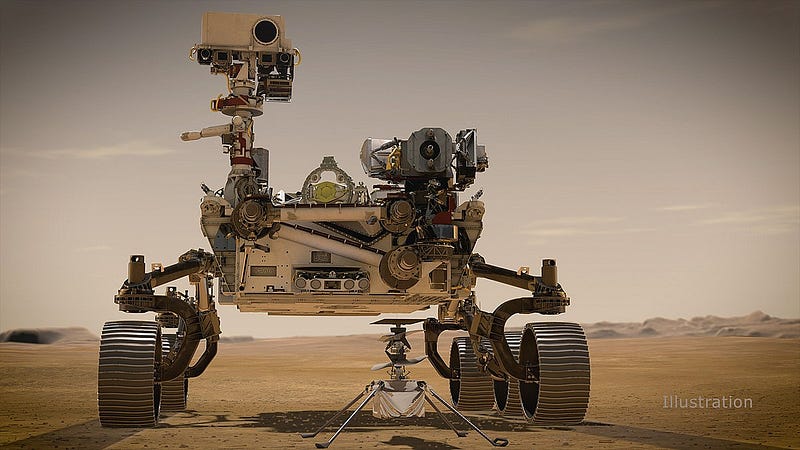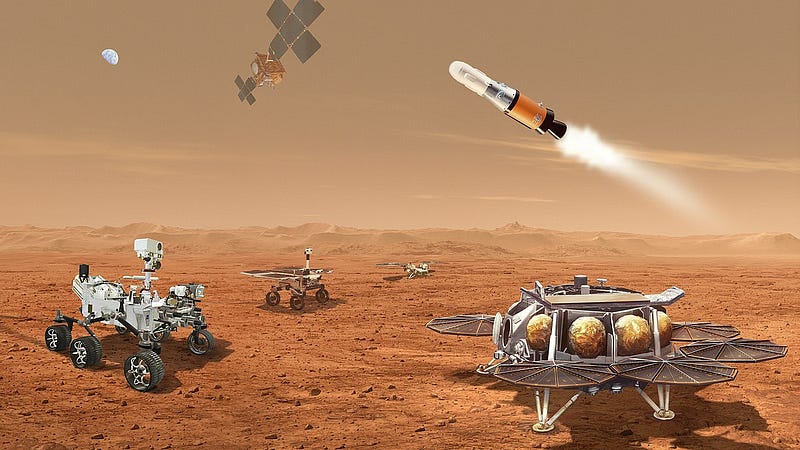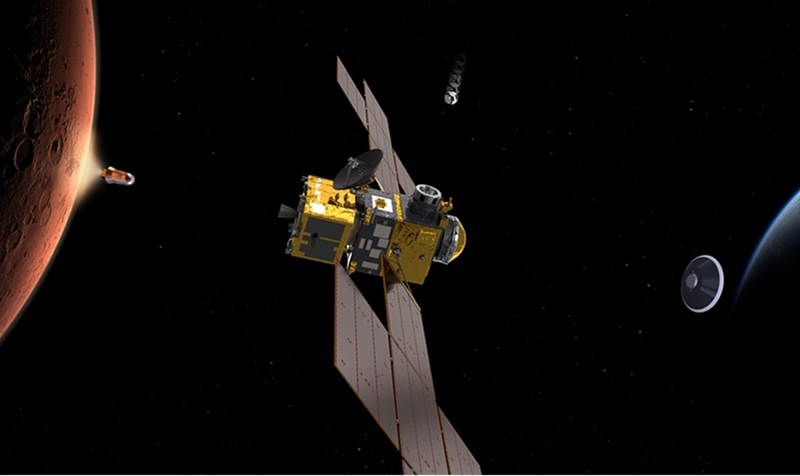# NASA's Mars Sample Return Mission: Ensuring Earth's Safety
Written on
Chapter 1: Overview of the Mars Sample Return Mission
NASA has scheduled the return of Martian soil and atmospheric samples to Earth by 2033. However, this ambitious Mars Sample Return mission has raised significant concerns among critics. They argue that, given the recent pandemic, bringing back materials from space that might harbor extraterrestrial life poses potential risks.

The Perseverance rover has been actively exploring the Jezero crater on Mars for over a year. A primary function of this rover is to gather samples. Equipped with a specialized drill, Perseverance breaks up Martian soil and rock, transferring small quantities into ultra-sealed titanium containers. Additionally, the rover is designed to capture samples of Martian air.
Currently, Perseverance is carrying 43 sample containers, of which only a handful have been filled. Ultimately, the rover aims to collect up to 35 samples. However, this does not imply that these valuable containers will remain on Mars indefinitely.
Section 1.1: The Process of Returning Samples to Earth
From the onset of the Perseverance mission, NASA has emphasized that the rover's efforts will not be wasted. The plan is to retrieve the Martian samples and transport them back to Earth. This operation, known as Mars Sample Return, is expected to be completed by 2033, with collaboration between NASA and the European Space Agency (ESA).
Bringing samples back from Mars is a considerably more complex task than simply sending rovers, a process that both the US and China have successfully managed. The Mars Sample Return mission will occur in several distinct phases.

The first phase involves sending another rover to Mars to retrieve the sample containers filled by Perseverance. This new rover will transport the samples to a lander equipped with a robotic arm, which will then place the samples into a specialized rocket for launch from the Martian surface. This rocket, referred to as the Mars Ascent Vehicle (MAV), is designed to be compact and lightweight. Lockheed Martin secured the contract to develop the MAV, which has a budget of $194 million.
The next phase involves the Earth Return Orbiter (ERO), currently being developed by ESA. This multi-stage mission carries inherent risks, as complications can arise at any point. The ERO is tasked with transferring the samples from the Martian surface into orbit, where they will be placed into a special capsule for the journey back to Earth.

By 2033, when the planets align favorably, the samples are anticipated to land in the Utah desert.
Section 1.2: Evaluating the Risks of Martian Material
Following the pandemic, many scientists are voicing concerns about the potential risks associated with importing Martian soil, air, and rock samples. While it is highly improbable, there remains a small chance that these samples could contain traces of Martian microbial life or even active bacteria.
In May 2022, NASA unveiled an updated plan for the Mars Sample Return mission, which prompted numerous inquiries from experts, as reported by the Philadelphia Inquirer.
Subsection 1.2.1: The Need for a New Laboratory
NASA officials explained that the samples cannot undergo standard UV sterilization methods, as this could eliminate any potential biosignatures they might possess. Testing in orbit is also not feasible due to the lack of sufficiently advanced equipment on the International Space Station. Moreover, exposing the samples to space conditions could diminish their scientific value.
To address these challenges, NASA plans to construct a completely new laboratory specifically designed for analyzing the samples collected by Perseverance. Details regarding the laboratory's design and location are yet to be determined. However, all Martian materials brought back to Earth will be directed to this facility, encompassing multiple containers holding less than half a kilogram of material.
Source: phys.org
The Perseverance rover's exploration of the sedimentary rocks of Enchanted Lake continues to provide insights into the search for life on Mars, a primary mission objective of NASA's Jet Propulsion Laboratory.
Cool that you made it to the end of this article. I would appreciate your support through claps or by following me. Thank you!